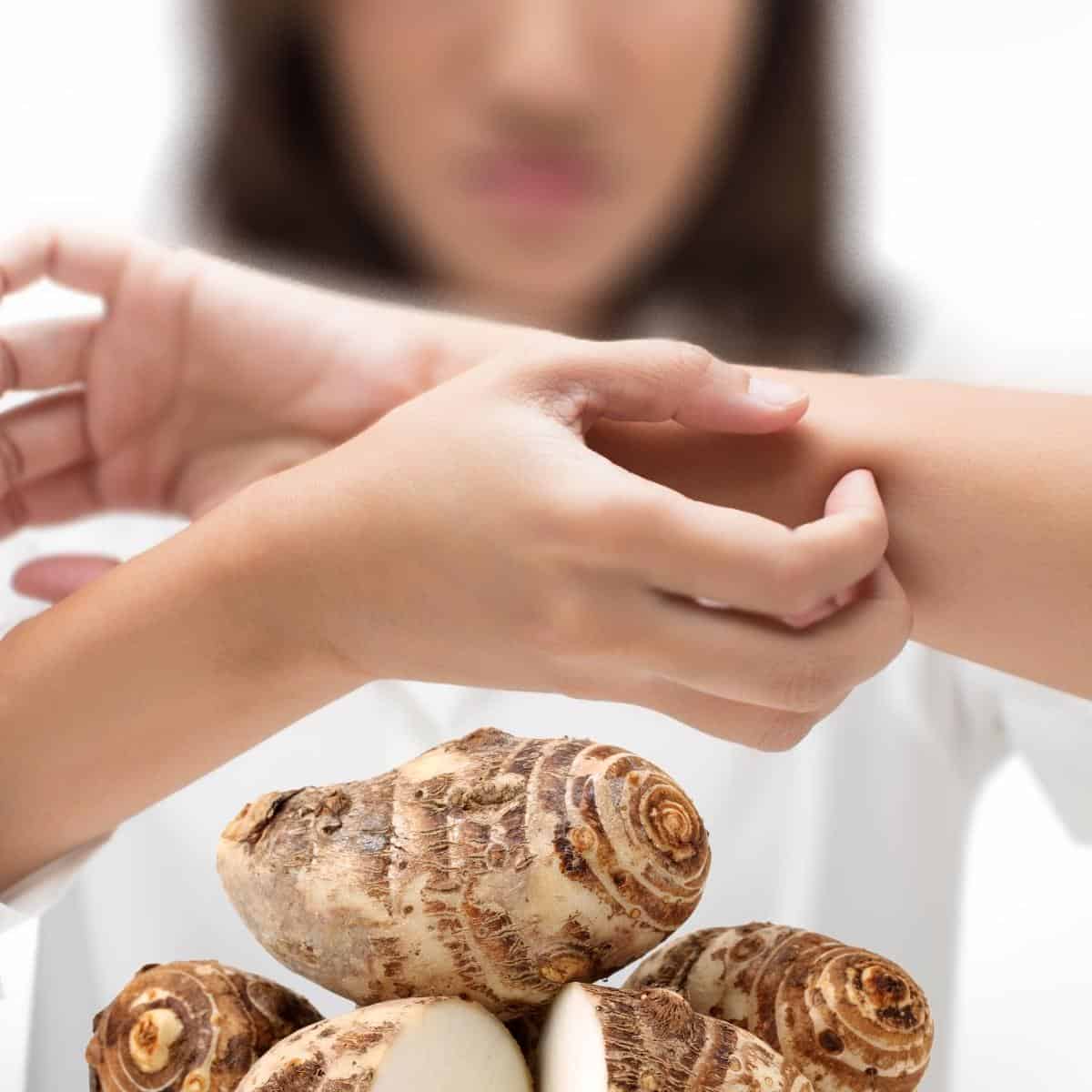Taro Root: The Starchy Asian Staple Food
Taro, or Colocasia esculenta, is a tropical plant that is grown primarily for its corm. The corm looks similar to a potato and is commonly used as a food source in many parts of the world.


Check out our new cookbook
Bitemybun's family recipes with complete meal planner and recipe guide.
Try it out for free with Kindle Unlimited:
Read for freeIn this post we'll cover:
Is taro edible?
Taro is edible, the taro root as well as the leaves and stem. But these parts of the plant can cause itchiness, which is why in countries other than the Philippines, only the taro root is eaten. Even though the whole plant can be eaten.
The itchiness caused by taro is due to the calcium oxalate crystals present in the plant. These crystals look like needles and are found in cells called “idioblasts”. When these cells burst, the crystals are released and cause irritation.
What does taro taste like?
Taro has a starchy taste and is often used as a replacement for potatoes. The taste of the leaves and stem can be described as being similar to spinach.
How do you harvest taro?
When the leaves of the taro plant dry out and get a yellow color they’re ready to harvest. The plants have a root, the taro, so to remove the plant from the ground it is dug out and pulled root and all.
How long do you cook taro?
Taro should be cooked until it is soft. overcooking it will make the taro root too watery. It usually takes 15-20 minutes to cook taro.
What’s the difference between taro and ube?
Taro and ube are two different plants. Taro is from the Araceae family while ube is from the Convolvulaceae family. They’re both root crops but taro has a gray-lavender color while ube is saturated purple. Taro tastes like sweet potato with a mild nuttiness to it while ube is much sweeter and has a stronger vanilla flavor.
Popular taro pairings
Taro can be cooked in many different ways and paired with a variety of ingredients. It is commonly boiled or fried and served with meat or fish. It can also be made into a soup or stew. Taro leaves are often used as wrappers for steamed dishes.
How to select and store taro
When selecting taro, look for firm, blemish-free roots. Avoid those with soft spots or bruises. Taro can be stored in the refrigerator for up to a week.
Taro should be washed thoroughly before cooking. The root can be peeled, but this is not necessary. Taro can be cooked in many different ways, including boiling, frying, or steaming.
Is taro healthy?
Yes, taro is healthy. It is a good source of dietary fiber, vitamins, and minerals. Taro also contains compounds that may have health benefits, such as antioxidants and anti-inflammatory properties.
Conclusion
Taro is a great plant and root to cook with, if you can get over the itchiness it may cause.
Check out our new cookbook
Bitemybun's family recipes with complete meal planner and recipe guide.
Try it out for free with Kindle Unlimited:
Read for freeJoost Nusselder, the founder of Bite My Bun is a content marketer, dad and loves trying out new food with Japanese food at the heart of his passion, and together with his team he's been creating in-depth blog articles since 2016 to help loyal readers with recipes and cooking tips.
